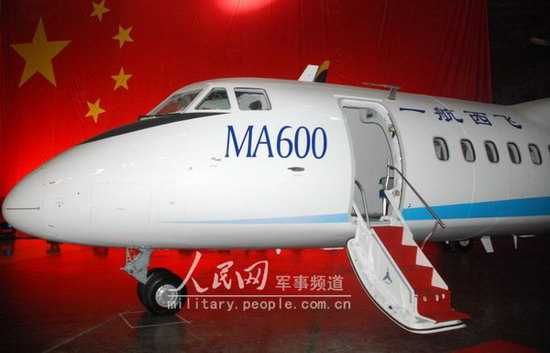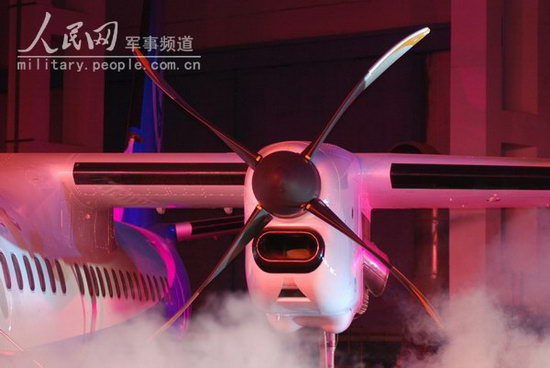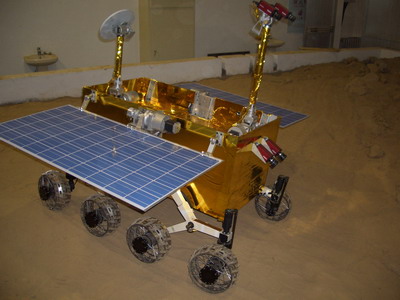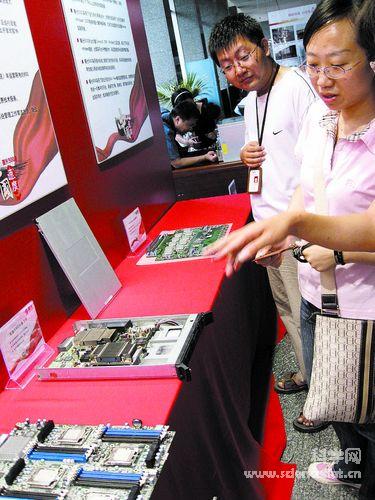|
CHINA SCIENCE AND TECHNOLOGY
NEWSLETTER
The Ministry of Science and Technology
People's Republic of China
|
|
|
N0.515 |
June 30,2008 |
|
|
|
|
|
|
|
|
IN THIS ISSUE
|
|
* Young Chinese and American Scientists Work Together
* China-Japan-Korea Discuss S&T Policies
* China’s Proprietary Super Long Train in Debut
* Chinese Made Passenger Aircraft for Regional Flights
* Chinese Made Eight-Wheel Moon Rover
* Shuguang Supercomputer Home in Shanghai
|
|
INTERNATIONAL COOPERATION |
Young Chinese and American Scientists Work Together
A collaborative research program for young Chinese and American scientists, jointly established by the Chinese Ministry of Science and Technology, Chinese Academy of Sciences, Chinese National Natural Science Foundation, and American NSF, has been successfully implemented for four consecutive years. As a follow-up, 37 American graduate students will become part of the cooperation program from June 15 to August 9, 2008, continuing S&T cooperation and exchange between the two countries. An opening ceremony was held in the morning of June 16, 2008 at the Ministry of Science and Technology, marking the implementation of the program in 2008. YAO Weike, Deputy Director of MOST Department of International Cooperation, William Chang, Chief of NSF Office in Beijing, and Virginia Curran, Second Secretary of US Embassy in Beijing spoke at the opening ceremony.
37 American students, from Stanford University and Princeton University, are majored in biology, ecology, physics, information, and computer science. In the first week from June 16 to 22, they were reoriented to familiarize themselves with China's S&T policies,
political and economic systems, history, culture, education, and customs. They visited the Chinese Academy of Sciences, Tsinghua University, and high tech parks. In the following period from June 24 to August 9, American students will work on collaborative research
projects under the guidance of their Chinese tutors at Peking University, Tsinghua University, Beijing Forestry University, Beijing Normal University, Chinese Academy of Geological Sciences Institute of Mineral Resources, and Chinese Academy of Social Sciences Institute of Linguistics.
China-Japan-Korea Discuss S&T Policies
Experts and scholars from China, Japan, and the Republic of Korea gathered together discussing S&T policies at a forum held June 23-24, 2008 at the Chinese Institute of S&T Development Strategies. The forum, jointly sponsored by five S&T policy organizations in three countries, makes a platform for sharing the experience in formulating S&T innovation strategies and policies, and in R&D management. The forum also made proposals for enhancing S&T cooperation among three countries. The forum, jointly organized by Chinese Institute of S&T Development Strategies and CAS Institute of Policy and Management, discussed a range of topics, including innovation strategies and associated policies for small and medium-sized enterprises, R&D budgeting and coordination, government research plan for adaptation to climate change, technology prediction, defining priority areas, and human resources management.
Transcontinental Telescope Array
On June 17, 2008, CAS Shanghai Observatory had its 25m radio telescope on the Sheshan Mountain technically connected to the five telescopes situated in Australia and Japan, using VLBI technology, to observe a distant celestial body for 12 consecutive hours. Observational results were shared through a high speed internet platform. The telescope array allows a resolution equivalent to seeing YAO Ming, the famous Chinese basketball player, on the moon, with a data transmission rate 32 times faster than the one used to measure the orbit of Chang’e I satellite. The novel technology will be used to measure the orbits of Chang’e II satellite and China-Russia Mars probe satellite in the future, though it can be used to observe and study earth plate movements.
According to experts, the VLBI experiment, conducted during the 7th international e-VLBI meeting held in Shanghai, makes an astronomical observation means allowing a best view of the targeted objects. It joins a number of radio telescopes in different parts of the earth to form up a super telescope, gaining an extremely good view with a greatly increased geographic span from several dozen meters to several thousand, or even more than ten thousand kilometers.
Joint Mobile Computation Study
Department of High and New Technology Development and Industrialization, part of Chinese Ministry of Science and Technology, inked on June 23, 2008 an accord with Intel to develop a new architecture for the next generation mobile computation technology. According to the accord, a Tsinghua-Intel research center will be established to work on the targeted technologies, including end-to-end mobile computation, new servers with distributed mobile computation applications, new generation application software, and user modules. The Center is supposed to work out prototypes based on its findings, in an attempt to promote commercial applications. Both Tsinghua University and Intel will be part of the operation and management of the new center, sharing the intellectual property, including patents and software copyrights, derived from collaborative researches. Ministry of Science and Technology, Tsinghua University, and Intel also plan to set up a steering panel to promote, supervise, and coordinate the implementation of the new project.
China’s Proprietary Super Long Train in Debut

A super long train made up of 16 compartment cars
A Chinese made super long train consisting of 16 compartment cars rolled off the assembly line at the Nanche Sifang Locomotive on June 29, 2008. Designed to run at a speed of 200-250km, the locomotive is a novel model applied with a range of state-of-the-art technologies, including a light aluminum alloy body, high speed bogie, high speed pantograph, and an integrated optic-fiber control network. Made up of 3 first-class compartment cars, 12 second-class compartment cars, and 1 dinning car, the train is able to carry 1,230 passengers, doubled the number that an 8-compartment train can carry. Meanwhile, the train is equipped with new functionalities, including dining car, multimedia system, highly advanced ventilation system, and emergency ventilation system, to allow an enhanced comfortableness and entertainment. The new train has demonstrated an improved stability in a high speed operation, thanks to the advanced technologies used, including a semi-active suspension system, and coupled car-end dampers.
The new train has been put into bulk production. The first trains will be put into operation on the rail line between Beijing and Qingdao on the eve of the Beijing Olympic Game.
Chinese Made Passenger Aircraft for Regional Flights



Turbo-prop passenger aircraft “Xinzhou”
Xinzhou-600, a proprietary new generation turbo-prop passenger aircraft for regional flights made its debut on June 29, 2008 in Xi’an. As a latest model in Xinzhou series designed and manufactured by Xi’an Aircraft Industry Group, the new aircraft enjoys numerous merits, including reduced cost and fuel consumption. Unlike strict requirements a jet may have on runways, Xinzhou-600 is able to take off on a runway as short as 1200-2000m, and is allowed to take off and land on a runway made up of earth and sands, or even on a snow-covered runway.
Chinese Made Eight-Wheel Moon Rover

A study team, led by Prof. DENG Zongquan with Harbin Engineering University, has recently made the debut of an eight-wheeled Moon Rover, the first of its kind in the country. Equipped with two solar cell panels that can be stretched out and repositioned, a camera post, directional antenna, all-direction antenna, front and rear obstacle avoidance camera, power system, and control system, the prototype Moon Rover is able to climb across rocks and slopes, and easily walk over deep pits in a simulating environment. The Rover has eight wheels that operate independently. Four of them can be easily turned around.
An enhanced obstacle surmounting capability makes the first innovative feature of the Rover. It has a suspension rack made up of 2 rocking arms, 2 torsion spring arms, and 1 differential oscillating bar, with two sides connected using a balancing unit, allowing a reduced shock when meeting with obstacles, and eight wheels touching the ground even in rugged terrains. The second innovative feature is an enlarged contact surface to avoid trapping in. The symmetrically designed structure makes another feature, which ensures an evenly distributed driving force for movements in all directions, a solution to unevenly distributed dynamic performance troubling some moon rovers.
The Moon Rover walks with the screen wheels made of titanium alloy, with a specially designed reducer as the driving unit. The reducer has a size 70% smaller than an average one, though with the same carrying capacity and work life. Its working arms are made of enhanced hollow structures, which greatly reduce the weight of the entire system.
Shuguang Supercomputer Home in Shanghai

Shuguang series products
Institute of Computing Technology under the Chinese Academy of Sciences, Shuguang Server, and Shanghai Supercomputing Center jointly signed on June 24, 2008 an agreement in Beijing to make Shanghai the home to Shuguang-5000 supercomputer. The effort will make Shanghai Supercomputing Center the largest commercial computing platform in the world. In addition to a capacity of 200 trillion floating-point operations per second, Shuguang-5000 supercomputer enjoys other strength, including proprietary design, super density, best cost/effect ratio, lowest energy consumption, and broadened applications. The new supercomputer also witnesses greatly enhanced performance in size, energy efficiency, software efficiency, and management. It produces a performance 20 times better compared with 4000A, with a size 2/3 of the latter, and an increased energy consumption by only 50%.
Electromagnetic Induction Heating Saves Energy
Not long ago, a technology for large power electromagnetic induction heating, developed by Tianjian Electromagnetic Technology affiliated to Shanghai Space Agency No. 802 Institute, passed experts’ verification check. The new technology works on the principle of high frequency electromagnetic induction, turning AC into DC, and transforming AC into a high pressure electric current with a frequency between 20Khz and 40KHz, producing an alternating magnetic field when electric currents passing through the coil. Magnetic lines of force would produce a strong vortex when passing through metallic materials, causing the latter to heat automatically. Traditional resistance wire based heating approaches claim a heating efficiency only around 40%, as most of the energy is consumed in the course of heat conduction and convection. Electromagnetic induction heating, on the contrary, is able to reach a heating efficiency as high as 90%, doubled the efficiency of resistance wire heating.
Software Turning SDTV into HDTV
Huazhong University of Science and Technology Institute of Artificial Intelligence has recently worked out a software to turn SDTV signals to HDTV ones, the first of its kind in the country. The software is able to convert SDTV signals in different formats into HDTV signals, or vice versa. In addition to the conversion, the system is also able to run on other management functions, including user and fee inquiry management, allowing an efficient management planning for operators. The system is featured with easy operation, simple maintenance, friendly interface, and scaleable design.
Improved Nuclear Power Simulation
Thanks to two-and-odd-year efforts, Wuhan Nuclear Power has independently completed the upgrade of a simulator designed for Qinshan Nuclear Power Plant Phase III project, without the support of the original simulator maker. Researchers have eliminated some 400 defects, and upgraded the simulator with additional testing and operational data. Based on the upgraded system, researchers have developed a proprietary all-purpose simulator with localized core technologies for Phase III project. The development indicates that China has eventually reached a full capacity to develop large nuclear power plant simulators on its own.
Chinese Made Explosives Trace Detector
Not long ago, the CAS Anhui Institute of Optics, Fine Mechanics, and Physics rolled out an instrument able to detect explosives trace in a fast manner. Designed to detect explosives trace in a moving electric field, the novel instrument is not only able to tell trace explosives, but also able to tell their features. Using a unique non-radiation ion technology, the instrument works on both positive and negative ions, with a widened detection scope and an improved accuracy. It takes only two to three seconds for the instrument to identify the traces of some 10 common explosives, including TNT, ammonium nitrate, and TATP, with a sensitivity reaching the pg level. Authorities concerned has confirmed through a comparative study that the Chinese made explosives trace detector presents a better performance in identifying the type of explosives, resolution, and sensitivity, compared with its overseas counterparts.
Freezing Rain Modeling
Scientists at the CAS Guangzhou Institute of Energy have recently established a model to study freezing rain disasters using air-conditioning and energy saving technologies, providing technical evidences for assessing freezing rain disasters frequently occurred in south China. Based on the past experience in producing cooled water and ice, scientists built the indoor freezing rain model to study freezing rain disasters and associated prevention and control products. The model works on freezing rain prevention and control techniques and materials for diverse applications, including power transmission facilities, telecommunication facilities, structures, highway, rails, flying vehicles, and plants.
Comments or inquiries on editorial matters or Newsletter content should be directed to:
Mr. XU Chaoqian, Department of International Cooperation, MOST 15B, Fuxing Road, Beijing 100862, PR China Tel: (8610)58881360 Fax: (8610) 58881364
http://www.most.gov.cn |

